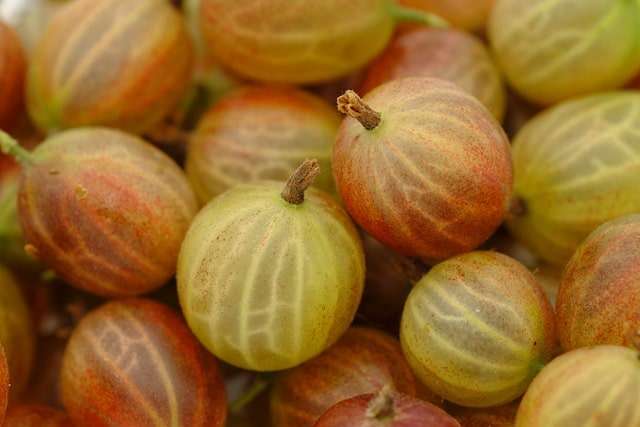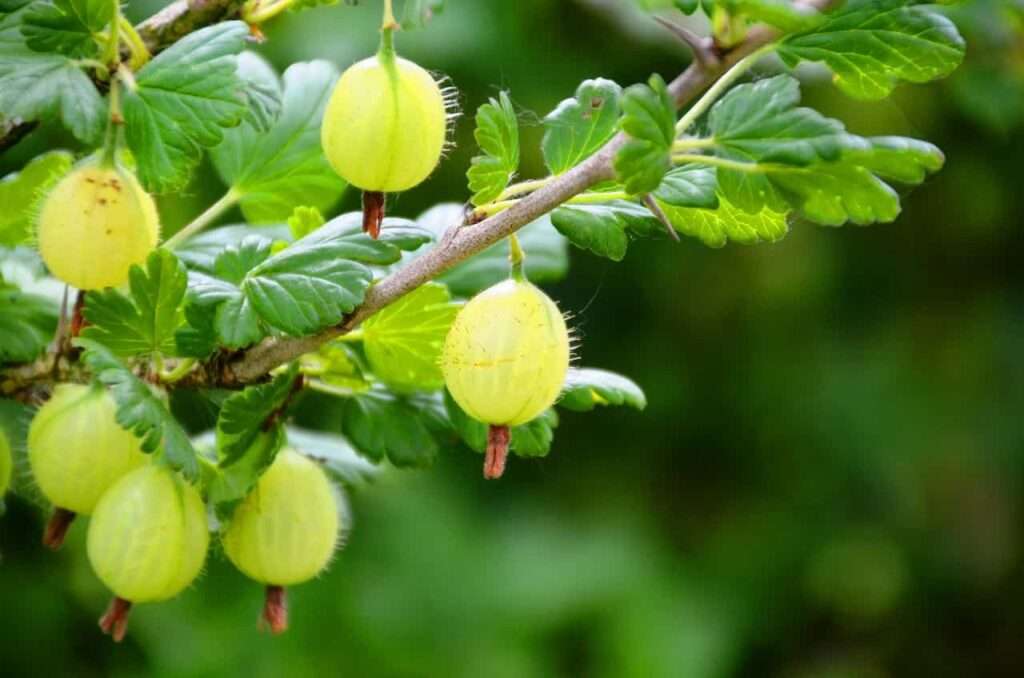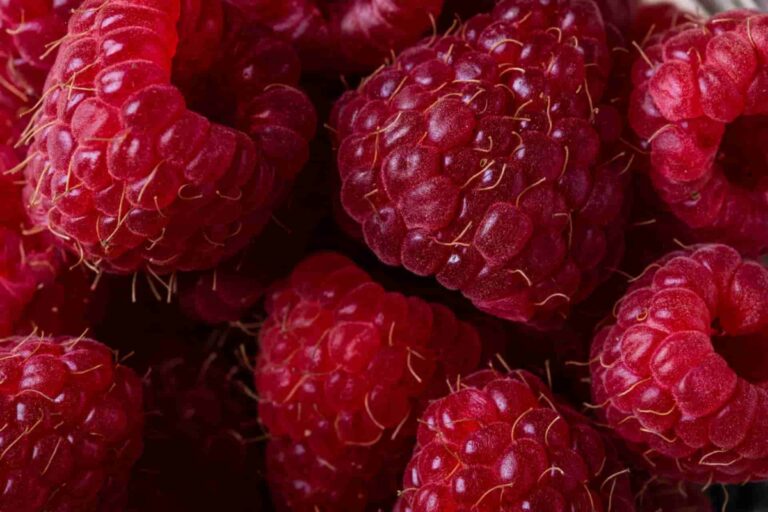Gooseberry 101- kitchen insights just for you
Did you know that gooseberries may be found in a range of colours in addition to the traditional green?
- The colour of the fruit might change depending on the variety from which it originated. It may be yellow, white, red, purple, or even nearly colourless. Colours like yellow, white, and purple are all possibilities. It is possible for it to take on the form of an oval, an expanded shape, a pear, or a roundish form.
- Gooseberries are a kind of berry that may be anywhere from round to oval in shape. They are native to the Northern Hemisphere and can be found in Europe, the Caucasus, and northern Africa.
- The obvious derivation from goose and berry is accepted as plausible by the Oxford English Dictionary because “the grounds on which plants and fruits have received names associating them with animals are so often inexplicable that the inappropriateness in the meaning does not necessarily give good grounds for believing that the word is an etymological corruption.”
- The first gooseberry clubs or societies were established in England from the middle of the eighteenth century, but they did not achieve their full level of fame until the middle of the nineteenth century. Gooseberries had a precipitous decrease in popularity following the First World War, and they almost fell completely out of style as a result. As a result, very few people today are aware of that trend or the fruit that started it: gooseberries.

Gooseberry nutrition values and health benefits
- Although they are low in calories and fat, gooseberries nonetheless provide a significant amount of nutritious value. Vitamin C is a powerful antioxidant that plays an important role in maintaining the health of a number of different body systems, including the neurological system, the immune system, and the skin.
- The creation of fatty acids requires vitamin B5, while the conversion of food into energy is aided by vitamin B6, which is essential for the normal functioning of a large number of enzymes and cells in your body.
- Copper has an important role in maintaining healthy blood vessels, the cardiovascular system, the immunological system, and the brain system. Potassium is necessary for proper cell function and growth, whereas manganese helps with metabolism, bone construction, reproduction, and immune response. Manganese also helps with immunological response.
- Due to the fact that gooseberries are high in dietary fibre but low in energy, you are able to consume a sufficient amount of them without consuming an excessive number of calories. In addition to this, gooseberries are a good source of both soluble and insoluble dietary fibres, making them a valuable addition to any diet.
- Soluble fibre helps to delay the transit of food through your digestive tract, which may help to lessen appetite and promote feelings of satiety. Insoluble fibre helps to bulk up your stool and improve its consistency, while soluble fibre helps to delay the transit of food through your digestive tract.
- In addition, the dietary fibre that you get from fruits and vegetables may assist you in keeping your blood sugar levels at a healthy level, while also lowering your blood pressure and cholesterol levels, as well as reducing the likelihood that you will develop chronic diseases such as certain cancers, cardiovascular disease, type 2 diabetes, and obesity.
- Antioxidants are chemical compounds that help in the prevention and decrease of the effects that free radicals have on the body. These are reactive compounds that harm cells and lead to oxidative stress, which is a situation that the body experiences. These chemicals induce cellular damage. Oxidative stress has been associated with a number of different diseases, in addition to the accelerated ageing process.
- Research has shown that eating foods that are high in antioxidants may protect your brain from degenerative diseases and decrease your risk of acquiring certain types of cancer, heart disease, and type 2 diabetes. Additionally, eating foods high in antioxidants can slow down the ageing process. Gooseberries are a very healthy snack due to the abundance of anti-oxidants that they contain, including vitamin C, as well as some vitamin E and phytonutrients in low amounts.
- Gooseberries include a significant amount of fibre and chlorogenic acid, both of which have been shown in preliminary research to either slow down the rate at which sugar is absorbed into the body or perhaps prevent it entirely.
- It has been shown that women who consume a diet that is abundant in fruits, such as berries, have a lower chance of developing heart disease. The antioxidants, potassium, and dietary fibre included in gooseberries all contribute to the positive effects that consumption of this fruit has on one’s cardiovascular system.
- Antioxidants are beneficial to heart health because they inhibit the oxidation of low-density lipoprotein (LDL, sometimes known as “bad”) cholesterol in the blood. Oxidation is a process that is associated with an increased risk of cardiovascular disease. In addition, phytonutrients including flavanols and anthocyanins have been shown to lower blood pressure and improve blood vessel function, which may result in a reduced risk of developing cardiovascular disease.
100g of fresh gooseberries has 44 calories(184kj), 0.8g protein, 0.5g fat, and 10g carbs, including 4.3g fibre.

How to store gooseberry and how to buy them
- Obtaining good-quality gooseberries is the first step in preserving them. There will be issues regardless of how well you try to store your gooseberries in the fridge if you buy them when they are either too ripe or too unripe. Unripe gooseberries, measuring between a quarter and a half of an inch in diameter, may seem totally spherical and reddish-purple in colour, while they may still have some clear green spots on the surface. When completely ripe, the gooseberry will still feel stiff to the touch, but don’t worry; this doesn’t mean it isn’t juicy. Overripe gooseberries, which are noticeable by their mushy or mealy texture, do not have a good flavour.
- As soon as you get your lovely, fully ripe gooseberries from the merchant, you should put them in storage. Proper storage will extend their useful life, and there are many options to choose from depending on how long you want them to stay in pristine condition. They may be left on the counter, but they won’t last more than a day or two if left there. In only the case of quick snacking should they be left out.
- One of the most common and convenient ways to keep gooseberries fresh is to keep them in the refrigerator. They will stay fresher for a longer amount of time than if left out on the counter, but you should still eat them quickly. Gooseberries, if purchased when ripe and not washed, may keep for up to a week in the refrigerator if stored in an airtight container. You may store them in the freezer for up to a year without washing them. They have a long shelf life until they are cleaned, after which they spoil rapidly. It’s only necessary to give the gooseberries one quick rinse if you plan on eating them within the next several days. As a result of being washed, they will degrade more rapidly due to the increased moisture.
- Freezing your gooseberries is a good way to extend their shelf life beyond a week.
- The general rule of thumb is that you have three options when it comes to storing gooseberries in the freezer. You may dry pack them first and foremost. Gooseberries, depending on their size, should be frozen for 4 to 8 hours on a tray. Save them for later by storing them in the freezer in a container that can withstand the cold.
- Second, you may use the syrup packing method to store your gooseberries. Put your gooseberries in a jar that can put in the freezer, then cover them with simple syrup. As they develop, they will take up more room, so leave some headroom in the container. Once the container has been sealed, it may be put in the freezer.
- Thirdly, you may add sugar if you want to make things more palatable. Whisk together 3/4 cup sugar and each quart of gooseberries in a separate basin until the sugar is dissolved. As soon as the sugar has dissolved (or as much as possible has), pack the fruit into containers that allow for some headroom, and then set them in the freezer.
- Whatever method you chose to freeze your gooseberries, they will keep for up to six months.
- Canning gooseberries is the best way to make sure they last for a long time. Good storage conditions in a can can allow gooseberries to last for up to a year. Despite appearances, canning is a straightforward process that can be accomplished by almost anybody. Fruits that have been cooked with sugar are all that go into a can, and they’re ready to eat in only a few hours. Put the fresh gooseberries in a container and pour the boiling sugar syrup on top of them; this eliminates the need to cook the fruit. After you’re done preserving your gooseberries, store the canned fruit in a cold, dark area.
- If you don’t want to take up valuable freezer space by freezing gooseberries, you may dry them for six months instead. You wouldn’t think it, but you can easily do this job in the comfort of your own home. Having them steam for around seven minutes and then chopping them up before placing them out in the sun would be all that is required. After drying, they keep for up to six months at ambient temperature or indefinitely in the freezer. For a return to their original softness, a splash of warm water is all that’s needed.

Cooking techniques, secrets, and tips from the kitchen
- Gooseberries pair well with a variety of fruits and flowers, including citrus fruits and elderflower.
- You may prepare a refreshing summer drink by combining gooseberries and mint in a lemonade, or you can give elderflower cordial a unique touch by adding a spoonful of the compote and a sprinkle of fresh ginger to it.
- You can prepare a straightforward gooseberry and elderflower fizz by mixing gooseberry purée that has been cooled with prosecco that has also been chilled. This will result in a beverage that is gently bubbly and floral.
- For a delectable infusion that is fragrant and fruity and has a touch of sweetness, give elderflower and gooseberry vodka a try.
- A delightful summer beverage that may be consumed straight, with tonic, or combined with sparkling water is homemade gooseberry gin. This beverage can also be served with fresh gooseberries.
- After you have completed the preparation of your compote, you may want to try placing a dollop of it in the middle of two slices of sponge cake that have been layered with some cream. You should definitely try this luxurious gooseberry jam, mascarpone, and Muscat cake. The boozy filling uses ready-made gooseberry jam, but you may also use homemade gooseberry jam if you like. This sour fruit also goes well with creamy coconut yoghurt in baked goods like our gooseberry coconut cake, and it adds an extra kick to citrusy baked goods like our gooseberry and orange dripping cake, which we also create.
- Gooseberries are a delicious addition to creamy desserts and sauces, and they go particularly well with cheesecake. To make a superb gooseberry and elderflower trifle, first create a handmade purée of gooseberries and elderflowers, then layer in mascarpone cream, fluffy sponges, and finish with whipped cream on top. You may also prepare a gooseberry fool with yoghurt using the same amount of time, which is around 20 minutes. This sugary syllabub may be whipped up in a hurry and served as a dessert at a dinner party, or it can be paired with elderflower for a more refined presentation.
- A wide range of frozen desserts may be enhanced significantly by the addition of gooseberry compote. On warm summer days, this simple gooseberry ice cream is a deliciously cooling treat that the whole family can appreciate together. Simply mix your purée with homemade egg custard, and then churn it in an ice cream maker until it reaches the desired consistency of being thick and smooth. As an alternative, you may offer this elegant gooseberry, elderflower, and sauvignon sorbet as a light palate cleanser at the end of a dinner party.
- Gooseberries aren’t only for desserts; you can also use them as a savoury main course dish’s flavouring element if you want to switch things up a little. It is possible to produce a refreshing dish for a dinner party by grilling mackerel and serving it with pickled gooseberry ketchup. Alternatively, you could serve it with other fatty fish such as salmon and seasonal vegetables. In addition, gooseberries generate a unique spicy and sour taste when combined with other flavours like as soy sauce, chilli peppers, and fish sauce.
- Do you wish to add some variety to the cheese you serve on the board? You could try an acidic and spicy gooseberry chutney, which is excellent for cutting through creamy cheeses such as brie and camembert, and will give goat’s cheese an even more feisty bite than it already has. You may have the chutney as a sweet treat after dinner with some crackers, or you can gift it to your loved ones as a tasty present they can devour.
- Desserts that are more involved have their place, but the straightforward crumble is hard to beat in terms of popularity. Create a mouth watering gooseberry crumble that the entire family can enjoy together. You may also try our gooseberry flapjack crumble if you’d like to soften the bitterness of these green berries. This dessert combines the gooseberries with apple slices that have been tangerine-flavoured. Gooseberry cobbler is another dish that provides a sense of warmth, and it tastes especially good when it is served warm with a dollop of vanilla ice cream.

History of gooseberry from the beginning until today
- From France to the Himalayas and peninsular India, the gooseberry grows wild in alpine thickets and rocky forests in the lower lowlands.
- Although the gooseberry is now common on some of the lower slopes of the Alps in Piedmont and Savoy, it is unclear whether the Romans were familiar with it, though Pliny the Elder’s Natural History may allude to it. Italy’s hot summers, both ancient and modern, would be unfavourable for its cultivation.
- Although gooseberries are currently common in Germany and France, they were not extensively farmed there during the Middle Ages, even though the wild fruit was regarded medicinally for its cooling acid juice in fevers. Fea-berry, still used in certain provincial dialects, implies that the fruit was appreciated in Britain, where it was grown in gardens early on.
- Gooseberries were popular cottage-horticultural crops in the late 18th century, especially in Lancashire, where industrious cotton spinners grew several varieties from seed to increase fruit size.
- Recent horticultural efforts have found 100 kinds, although few are as flavorful as the Old Rough Red and Hairy Amber, which have existed in fruit gardens for centuries. Gooseberries may be grown in even the most northern parts of Scotland, and their flavour is said to improve with latitude. The bush is prevalent in Norway, where it grows in gardens on the west coast nearly to the Arctic Circle and in the wild as far north as 63°.
- It grows well in hilly sections of France and Germany, but not in the hot, dry summers of the lowlands. In cold southern England, gooseberries grow well beneath apple trees in gardens near London. The gooseberry grows best in broad light in northern England. It thrives in any well-drained soil, but prefers rich loam or black alluvium. It grows successfully on well-drained wet soils despite being an arid plant.
- Blister rust, which kills pines, made gooseberries less frequent in North America. Gooseberries were taken from forests throughout the continent.







